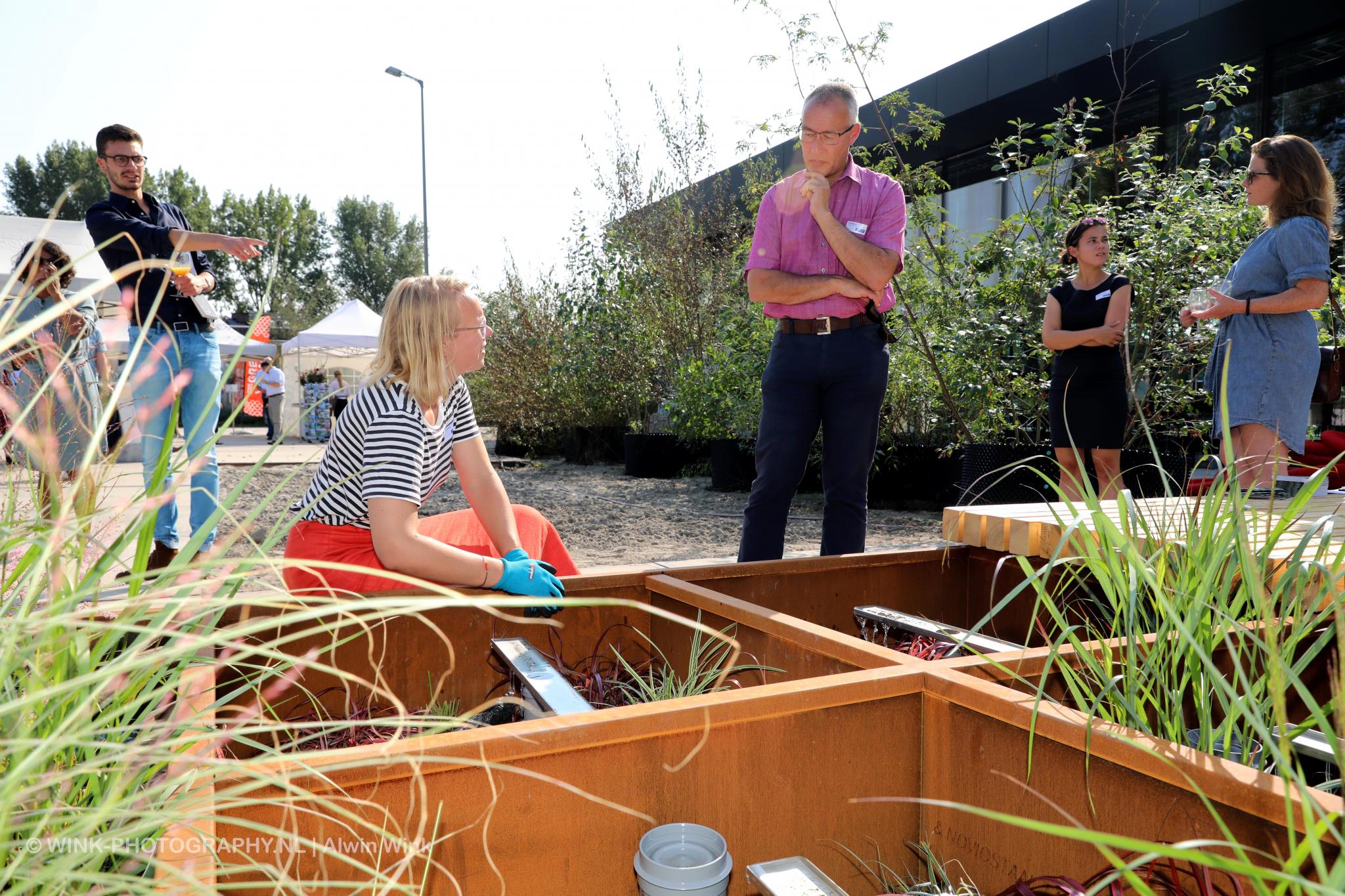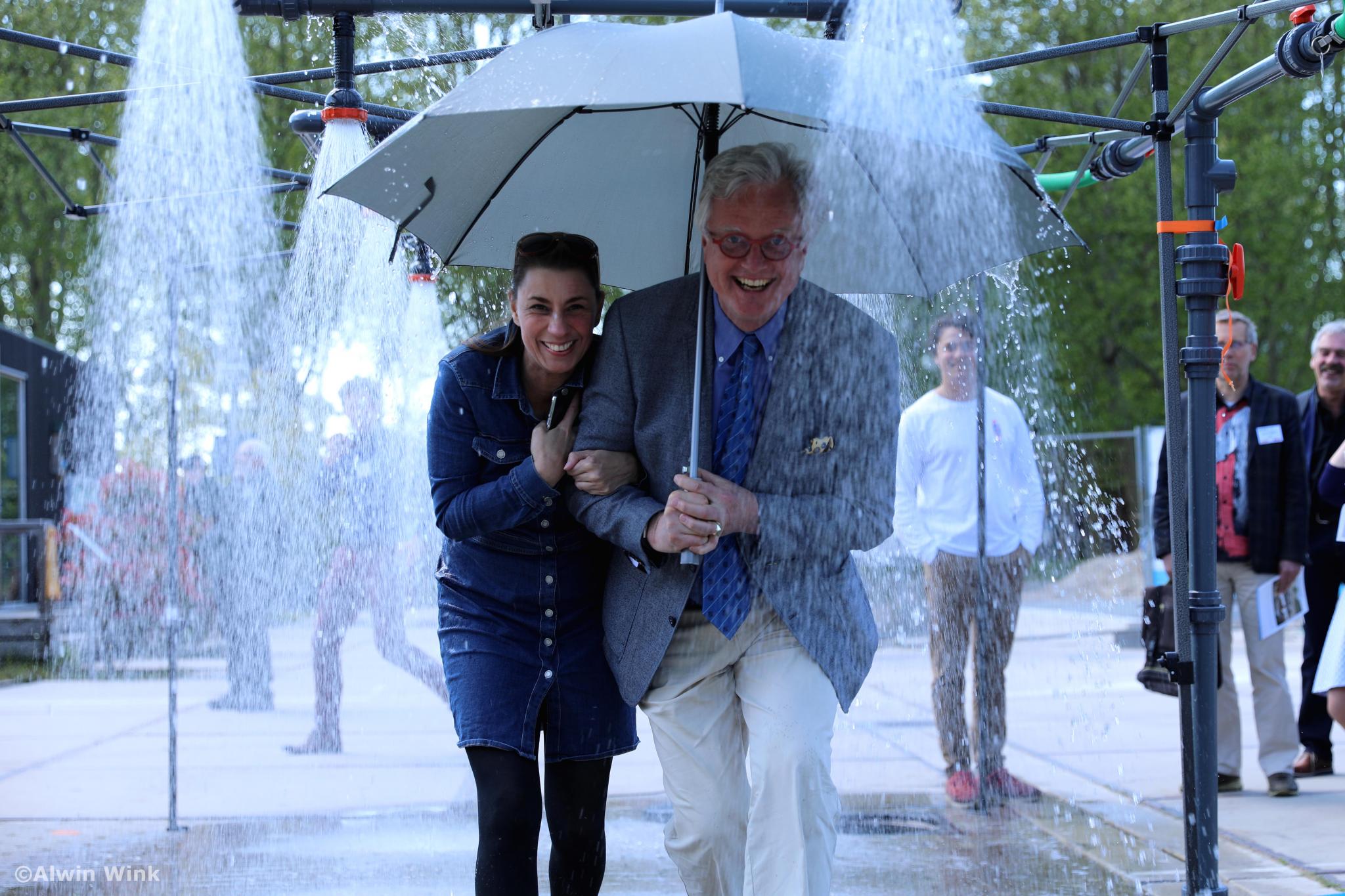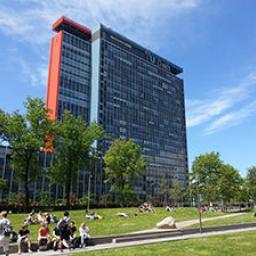A sustainable future requires innovative ideas and new applicable methods and techniques. At The Green Village, knowledge- and educational institutions, entrepreneurs, government bodies and civilians can research, experiment, validate and demonstrate their sustainable innovations. This field lab at TU Delft Campus focuses on the urban environment where you can test on neighbourhood-, street- and building level. The Green Village is a place where people can live, work and learn, exempt of standard rules and regulations.
By paying attention to technical, corporate, social and policy-based challenges, we help innovative parties accelerate from theory to practice. These challenges are divided into three themes: sustainable building and renovation, future energy system and the climate adaptive city.

We have established a Learning Community for these themes, as there is much more to learn from one another. The combination of working, experimenting, learning and inspiring leads to innovation. We facilitate master classes, workshops, guided tours and (re)training. Our Learning Community works towards a future generation of professionals and civilians who are mindful of and dedicated to the challenges and solutions of the future.
Climate adaptive city
We’re experiencing increasingly extreme weather. Longer periods of drought are alternated by large amount of rain in a short period of time. During the dry periods, the city feels muggy and during heavy rainfall in combination with a lot of paving, tarmac and tiles, the sewerage can’t process the large quantity of water. How can streets and neighbourhoods accommodate more extreme weather conditions, also in the future? And how can we make sure to have enough water during long periods of drought?
This makes the city more vulnerable which affects us all: civilians, companies and governments. That’s why government bodies, entrepreneurs and knowledge institutions are searching for new, practical and applicable solutions to make the city future resistant by limiting problems and damage caused by water and increasing the quality of life. Within the theme ‘climate adaptive city’, we offer opportunities for innovations related to flooding and heat stress & long-term drought, called the WaterStraat and the HittePlein.
WaterStraat and HittePlein
At the HittePlein and WaterStraat, entrepreneurs test, improve and demonstrate their climate adaptive innovations in an environment exempt of standard rules and regulations. By doing this in an early stage, lessons can be learnt fast, making the step to application on a larger scale possible.
At the WaterStraat - a joint initiative of VPdelta and Hoogheemraadschap Delfland - entrepreneurs, researchers and area managers work together to defeat flooding in the city due to the changing climate in the Netherlands. Think of solutions such as underground water reserves, smart rain barrels, and concrete blocks for rainwater drainage and buffering.
At the HittePlein, they work on solutions related to heat stress and long-term drought. Sustainable innovations which aim to tackle rising temperatures in the city and defeat long-term drought with the help of reusable water and buffering. For example by making use of rainwater in times of extreme drought.

WaterStraat case: buffering and infiltrating of rainwater
Bufferblocks by entrepreneurs Dorian Hill and Aroen Mughal, are modular concrete, hollow elements which function together as an underground water buffer, which slowly allows water to infiltrate into the surface. By buffering water and slowly letting it infiltrate, you can fight flooding as well as drought in the ground. Never before have these types of blocks been used in this combination in the surface.
The Municipality of Capelle aan den Ijssel has a weak soil, so the weight of pavement is a deciding factor. When they were looking for a climate adaptive solution for the neighbourhood Arica, they ended up at The Green Village where they choose Bufferblocks. Due to the hollow spaces, the weight of an unfilled bufferblock is almost equal to the common Bims, a light supportive material.
HittePlein case: storage and reuse of rainwater
The entrepreneurs from Field Factors are part of the first ‘residents’ of the WaterStraat. They’ve tested their Bluebloqs there, a solution for the holding, filtering and storing of rain water, so it can be recycled for irrigation, for example. This offers a solution for flooding as well as drought. After the first researches and tests at The Green Village, this technology was scaled up to Spangen, to irrigate a football field of Sparta Rotterdam with rain water.
Have you got a climate adaptive solution which you’d like to test at our field lab? Please contact Willy Spanjer, Project manager climate adaptation & circular economy 31(0)6 14 60 96 31 and willy.spanjer@thegreenvillage.org. Are you curious about our existing innovations? Take the Climate Adaptative VR Tour of our terrain.

